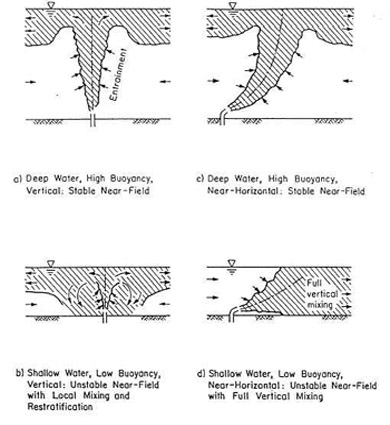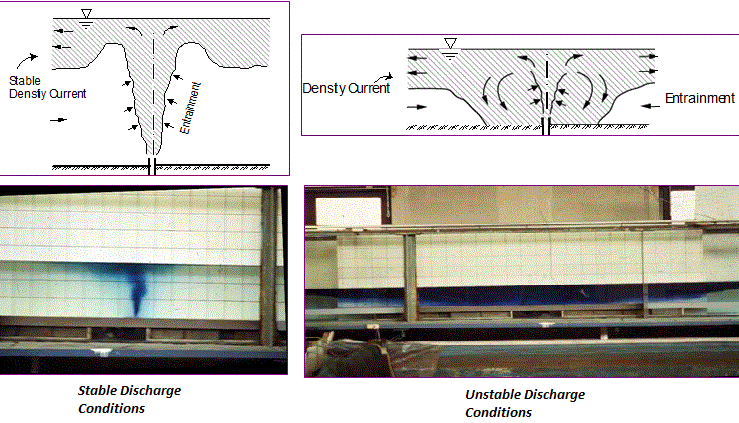The assessment of near-field stability, i.e. the distinction of stable or unstable
conditions, is a key aspect of effluent dilution analyses and mixing zone modeling.
It is especially important for understanding the behavior of the two-dimensional plumes resulting from multiport diffusers,
as shown by some examples in the image on the right.
Turbulent buoyant jet integral models
are not in general applicable to unstable flow conditions.
It is therefore essential to determine flow stability before any simulation is attempted.
The flow classification system of CORMIX determines the stability of each discharge/environment situation
under consideration.
The resulting flow class assures that the correct combination of regional flow modules are used to
simulate the mixing zone.
-
Stable discharge conditions: Usually occur for a combination of strong buoyancy,
weak momentum and deep water.
Thus they are often referred to as "deep water" conditions (Images a, c) -
Unstable discharge conditions: Occurs when a recirculation phenomena appears in the discharge vicinity (Images b, d).
This local recirculation leads to re-entrainment of already mixed water back into the buoyant jet region.
Unstable may be considered synonymous to "shallow water" conditions.



